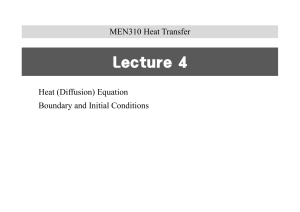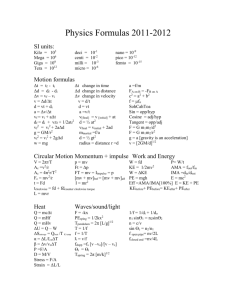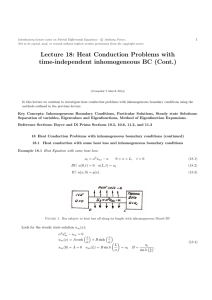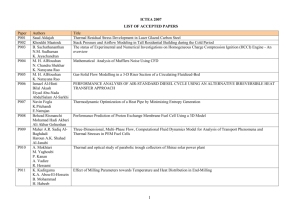Equazione di Diffusione del Calore: Presentazione Universitaria
advertisement
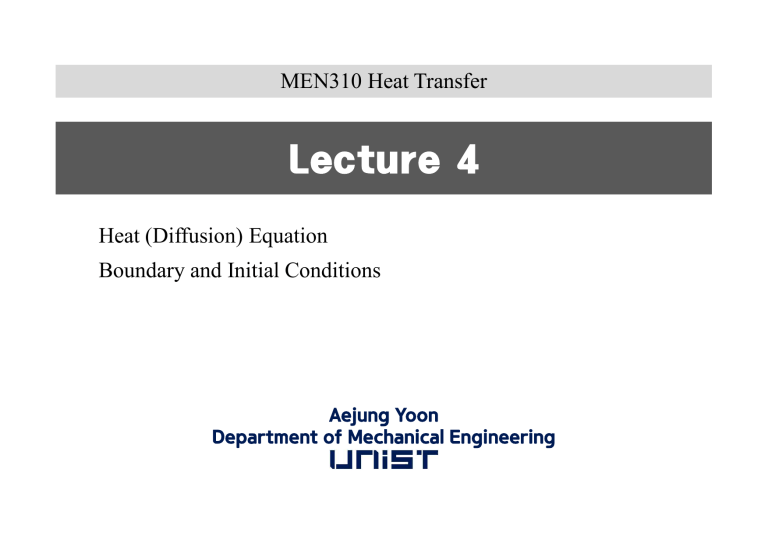
MEN31001 MEN310 Heat HeatTransfer Transfer Lecture 4 Heat (Diffusion) Equation Boundary and Initial Conditions Aejung Yoon Department of Mechanical Engineering Example : Steady-state temperature distribution within a composite wall Under steady-state conditions w/ no internal generation, 1D conduction Which material has the higher thermal conductivity? Does the thermal conductivity vary significantly with temp.? If so, how? Example : Heat flux and temperature gradient Determine the heat flux and the temperature gradient. q¢¢x = - k x T2 = 600 K (a) T1 = 400 K L = 0.1 m, k =100 W/m⋅K dT dx where dT T ( L ) - T ( 0 ) = dx L-0 dT T2 - T1 ( 600 - 400 ) = = = 2000 K m dx L 0.1 dT q¢¢x = - k x = -100 × 2000 = -200 kW m 2 dx Conservation of Energy For a closed system or a control volume 1st law of thermodynamics DEsttot = Q - W Alternatively DEst = Ein - Eout + Eg The energy rate balance is outflow dE E& st = st = E& in - E& out + E& g dt inflow generation Heat Diffusion Equation From the conservation of energy dEst & = Ein + E& g - E& out dt For a differential control volume (of a homogeneous medium), Substituting these into the 1st law yields qx + q y + qz + q& ¢¢¢dxdydz - qx+dx - q y +dy - qz +dz = Using a Taylor series expansion, neglecting higher order terms, q y + dy = q y + qz + dz ¶q y dy ¶y ¶q = qz + z dz ¶z Then From Fourier’s law q y = - kdxdz ¶T ¶y qz = - kdxdy ¶T ¶z Volumetric energy generation Substituting these ¶ æ ¶T çk ¶x è ¶x ö ¶ æ ¶T ÷+ çk ø ¶y è ¶y ö ¶ æ ¶T ÷ + ¶z ç k ¶z è ø Net heat transfer by conduction If k = constant where k a= rcp Thermal diffusivity ¶T ö ÷ + q& = r c p ¶t ø Change of thermal energy Boundary and Initial Conditions ¶ æ ¶T çk ¶x è ¶x ö ¶ æ ¶T ÷+ çk ø ¶y è ¶y ö ¶ æ ¶T ÷ + ¶z ç k ¶z è ø ¶T ö ÷ + q& = r c p ¶t ø Example: A long copper bar Known: Schematic: Find: Assumptions: Analysis: Ñ × ( k ÑT ) + q& = r c p B.C.s I.C. ¶T ¶t Temperature distribution Time variation of the heat flux at the surfaces ( x = 0, L ) Example : A plane wall Known: Find: Assumptions: Analysis:
